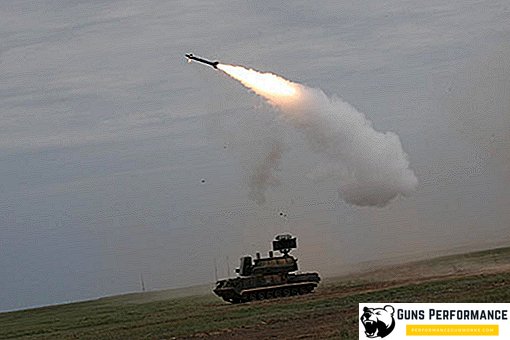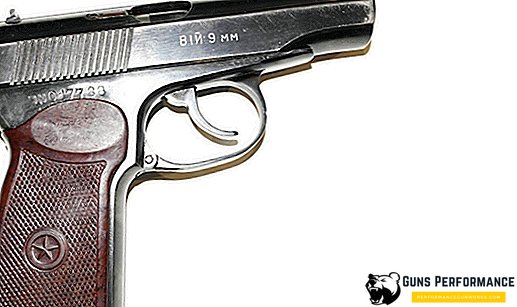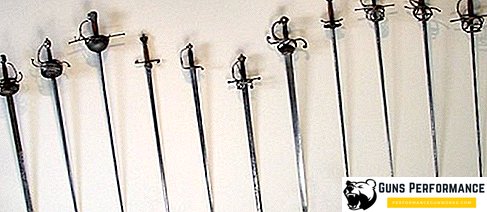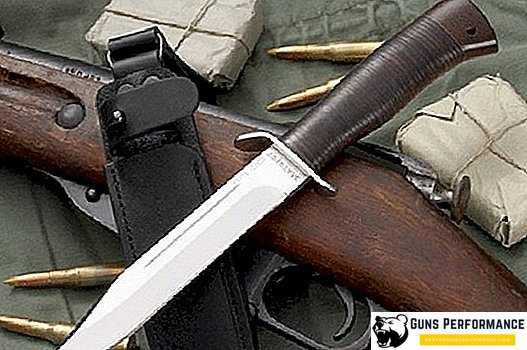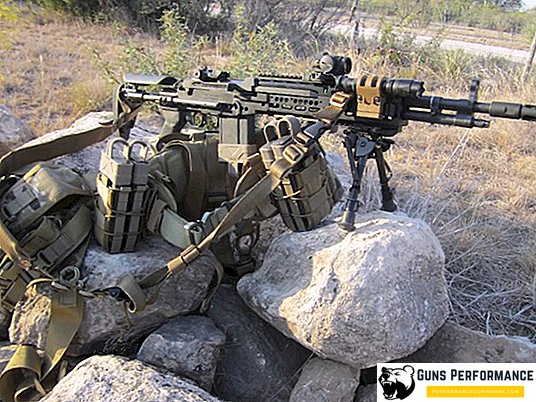
M14 - is an American automatic rifle, developed in the late 50s and still in service with the US Army. The M14 was designed to replace the legendary self-loading rifle M1 Garand, the characteristics of which were no longer suitable for the US military.
For almost a decade, the M14 was the main weapon of the American army; in the mid-60s, it was replaced by the M16 automatic rifle. However, the M14 is still in service with the Marine Corps and US Navy units. M14 is also used as a ceremonial weapon during various ceremonial events.
Today, the M14 automatic rifle is one of the standard types of sniper weapons of the American army and marines. The rifle has been repeatedly upgraded, there are more than ten modifications of this weapon. M14 is also used by US police.
In addition to the United States, the M14 is in service in more than ten armies in the world; this rifle is often used as a sniper weapon by special units.
The M14 rifle has been in service for more than half a century, while it was used less as a regular weapon of the US Army than any other small arms.

History of creation
The main weapon of the US Army during the Second World War (and then the Korean War) was the M1 Garand rifle, which was rightly considered one of the best rifles of its time. This weapon can be safely called legendary: with the M1, American soldiers stormed Guadalcanal, landed on the coast of Normandy and defended the 38th parallel.
However, there is nothing perfect: for all its merits, the M1 Garand had serious shortcomings, which by the mid-50s were absolutely not suitable for the US military.
Most of the questions were to the rifle ammunition: the eight round cartridge was not very comfortable, it could not be recharged, after using the last cartridge it was thrown out of the weapon with a characteristic sound prompting the enemy that the soldier had run out of ammunition. The gas engine M1 had a long stroke, which lowered the accuracy of fire. In addition, the military wanted to get a weapon capable of firing automatic fire.

Work on the modernization of the M1 / creation of a new automatic rifle began during the war. The largest American manufacturers of small arms took part in them: Winchester, Springfield, Remington.
Back in 1944, Springfield offered the T20 rifle, also designed by John Garand, to the Ministry of Defense. In fact, it was the same M1, but with a detachable magazine for 20 rounds and the ability to conduct automatic fire.
After the war in the USA, work began on creating a new ammunition for an automatic rifle. Needed a cartridge with smaller dimensions than the 7.62 × 63 mm, but with similar ballistic characteristics. In 1952, the US Army adopted a 7.62 × 51 mm cartridge, which was shorter than the 7.62 × 63 mm ammunition, but had comparable power due to the use of more advanced gunpowder. In 1954, this cartridge was adopted as a standard for all NATO member states.
Under the new cartridge was developed a prototype rifle - T37, which differed in the design of the vapor chamber. A little later, a prototype of the T44 appeared, whose work of automation was based on a scheme with a short stroke of a gas piston (instead of a long one).
The tests of the new weapon (it was compared with other samples) fully satisfied the American military, and in 1957 the T44 rifle was put into service. She received the name of M14.
By the way, the main competitor of the T44 was the prototype of the T48, which was nothing more than a licensed copy of the Belgian FN FAL. The T44 was a pound lighter, but the main disadvantage of the T48 was that it was not developed in the USA.

The Springfield Armory company began mass production of the M14 as early as next year, but various delays led to the fact that by the end of 1961 only one division was fully equipped with a new rifle. Fully completed at the end of next year. From the American treasury, $ 144 million was allocated for the new weapon; in total, 1.4 million M14 units were ordered. That is, each rifle cost the American taxpayer 102 bucks.
Baptism for the M14 was the Vietnam War. The first reviews about the effectiveness of the use of a rifle in difficult combat conditions were very mixed. M14 was too long and cumbersome, and not too suitable for war in the jungle. On the other hand, this weapon had good accuracy and accuracy of shooting, and the new NATO 7.62x51 cartridge was quite powerful and did not ricochet from foliage or branches.

The wooden weapon box had an unpleasant property of swelling in a humid tropical climate, which significantly reduced the accuracy of shooting. Soon the tree was replaced with fiberglass. It was in Vietnam that M14 was practically not suitable for automatic fire. A powerful cartridge gave a serious return, the third cartridge went about ten meters above the aiming point.
An automatic fire, more or less accurately, from the M14 could only be fired from a bipod or an emphasis, otherwise the shooting turned into a waste of ammunition. It is for this reason that most of the rifles were issued to servicemen with the fire mode switch removed.
Yes, and the 7.62 mm caliber cartridges themselves were large, which significantly reduced the number of portable ammunition.
All of the above led to the fact that in 1966-1967 the new American M16 automatic rifles for a low-impulse cartridge of 5.56 × 45 mm began to be massively supplied to the US Army. M14 for some time was in service with units located in Europe, however, there it was soon replaced by M16.
Given the powerful ammunition and good single-shot accuracy, the M14 rifle was turned into a sniper weapon. In this capacity, it is still used today.

In the 1970s and 1980s, a large number of M14 rifles were transferred to other countries as part of donations to allies. These weapons were obtained by Turkey, the Philippines, South Korea, and Taiwan. In the 90s M14 a significant number of these rifles were transferred to the Baltic states.
The M14 was practically not used by the US Army during Operation "Desert Storm" in 1990. However, after the start of active ground campaigns in Afghanistan and Iraq at the beginning of this century, the US Army felt an acute need for more powerful and long-range rifles than the standard 5.56 mm standard weapons that came into service.
The Americans took the path of least resistance: they returned to the system the old and proven M14. Of course, before this rifle went through a serious upgrade, they were equipped with new mounts and sights, adjustable plastic butts, bipod and silencers.
Currently, improved modifications of the M14 are enjoyed by fighters from various US special units.

Description of the weapon
M14 - automatic rifle, its automation works by withdrawing a portion of the powder gases from the barrel. The vapor pipe is under the barrel, the gas piston has a short stroke. The barrel is locked by turning the bolt: two lugs fit into the grooves of the receiver.
The recoil spring is under the barrel and is connected to the bolt carrier. The trigger mechanism is of the hammer type; it allows automatic firing.
The bolt delay is set to the left of the receiver; after the cartridges are used up, the bolt remains in the open position.
Sights consist of a diopter pillar mounted in the rear of the receiver and the front sight in the earphone. The rifle's box is wooden, with a half-pistol grip, there is a metal upper nozzle on the barrel. A flame arrester and a mount for a bayonet are mounted on the barrel.
The ammunition is made from box stores with a capacity of twenty rounds.

Weapon modifications
Over the years of operation, a large number of modifications of the M14 rifle were created, below are just some of them:
- M14A1. Modification rifle, released in 1963. It was supposed to be used as a light machine gun. The weapon was equipped with bipod and front handle.
- M14M. Commercial modification of weapons capable of firing only single fire.
- M21. Sniper rifle, developed on the basis of modification M14.
- M25 Sniper Weapon System. This is another sniper modification M14, developed for special forces of the American army in the early 90s.
- Mk 14 Mod 0 Enhanced Battle Rifle. Rifle, released in 2004 for special forces of the US Navy. It has a new barrel, adjustable butt, bipod, pistol grip, Picatinny rail bar.
- M39 Enhanced Marksman Rifle. Rifle, developed in 2008 for the US Marine Corps. It is equipped with a Picatinny bar, bipod and telescopic sight.




